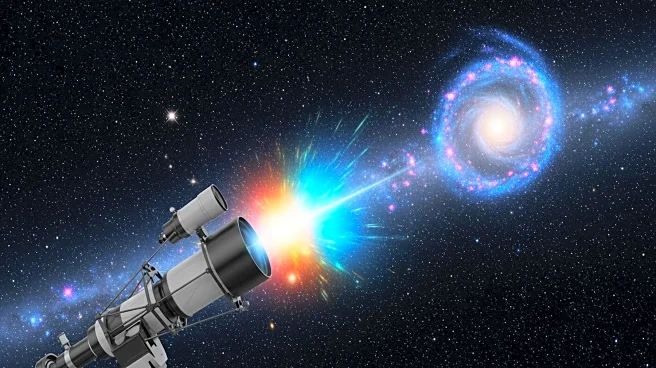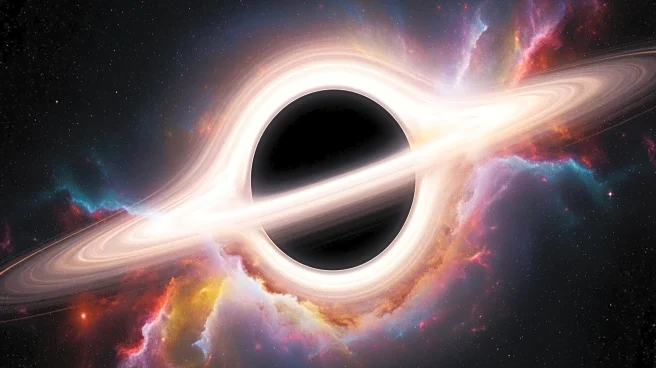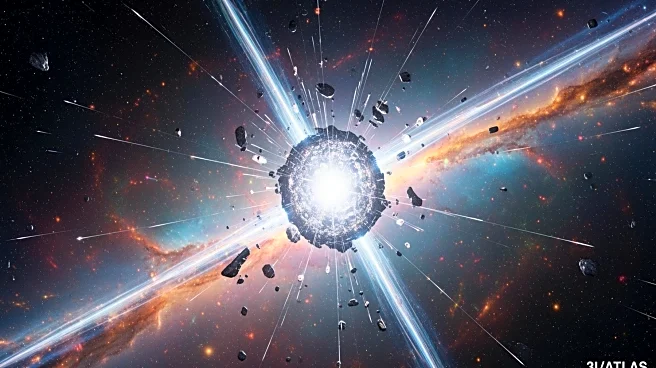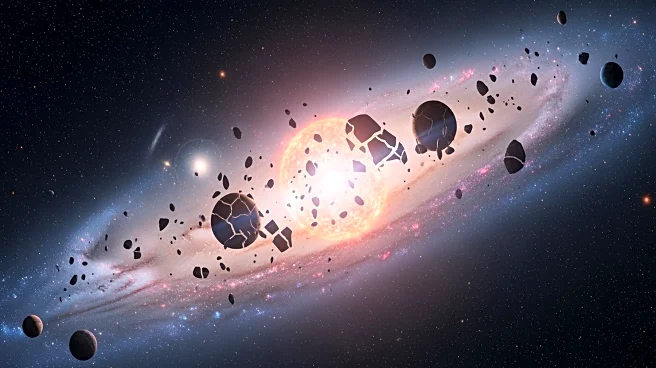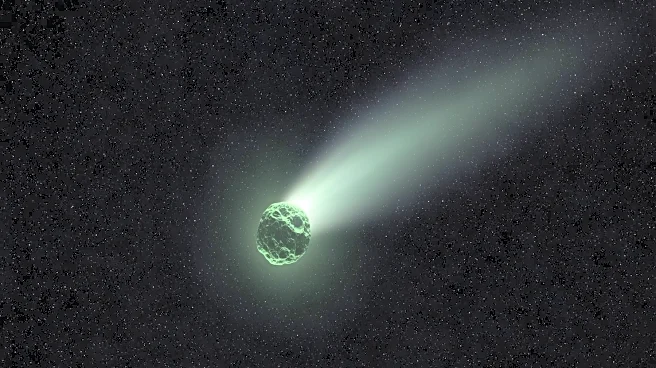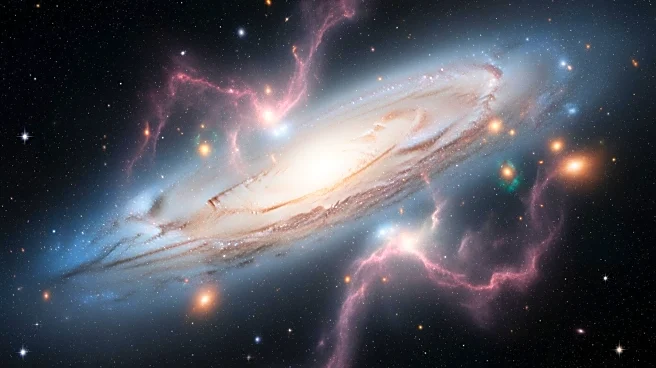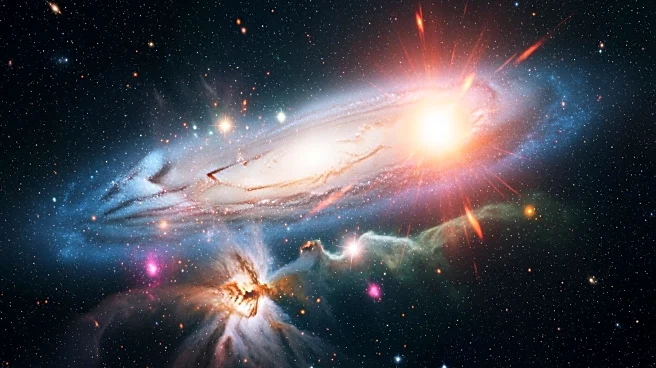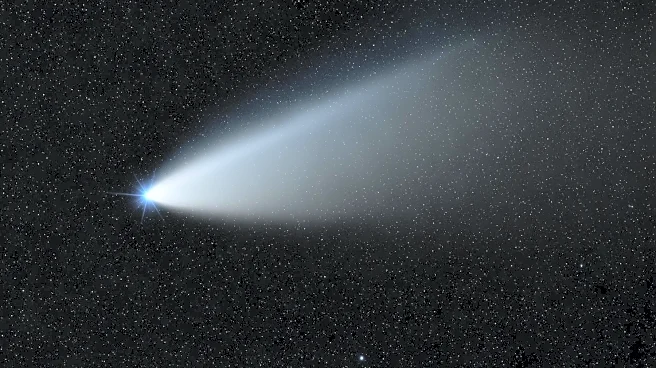What's Happening?
Astronomers have detected an extraordinary gamma-ray burst (GRB) named GRB 250702B, located several billion light-years outside our Galaxy. This event has puzzled scientists due to its unique characteristics,
differing significantly from typical GRBs observed over the past 50 years. Unlike standard GRBs, which are brief and singular occurrences, GRB 250702B exhibited repeated powerful activity and lasted for an entire day, which is 100 to 1,000 times longer than usual. The burst's origin was pinpointed using the ESO's Very Large Telescope, confirming its location far beyond our Galaxy. Researchers, including Antonio Martin-Carrillo from University College Dublin, are exploring potential causes, such as a massive star collapsing or a star being torn apart by a black hole.
Why It's Important?
The discovery of GRB 250702B challenges existing theories about gamma-ray bursts, which are typically understood as catastrophic events resulting from the destruction of stars. This unusual burst, with its prolonged duration and periodic activity, suggests that there may be unknown mechanisms at play in the universe. Understanding these phenomena could provide insights into stellar evolution and the dynamics of cosmic events. The implications extend to astrophysics, potentially altering how scientists interpret data from distant cosmic explosions and the forces involved in such events.
What's Next?
Researchers will continue to analyze data from GRB 250702B to uncover the underlying causes of its unique behavior. Further observations and studies may focus on identifying similar events and understanding their origins. The scientific community is likely to engage in discussions and collaborations to refine models of gamma-ray bursts and explore new theories that accommodate these findings. This could lead to advancements in technology and methodologies used in astronomical research.
Beyond the Headlines
The detection of GRB 250702B may prompt ethical considerations regarding the allocation of resources for space exploration and research. As scientists strive to understand these cosmic phenomena, questions about the prioritization of funding and international collaboration in space science may arise. Additionally, the event highlights the vastness and complexity of the universe, potentially influencing cultural perceptions of humanity's place within it.
